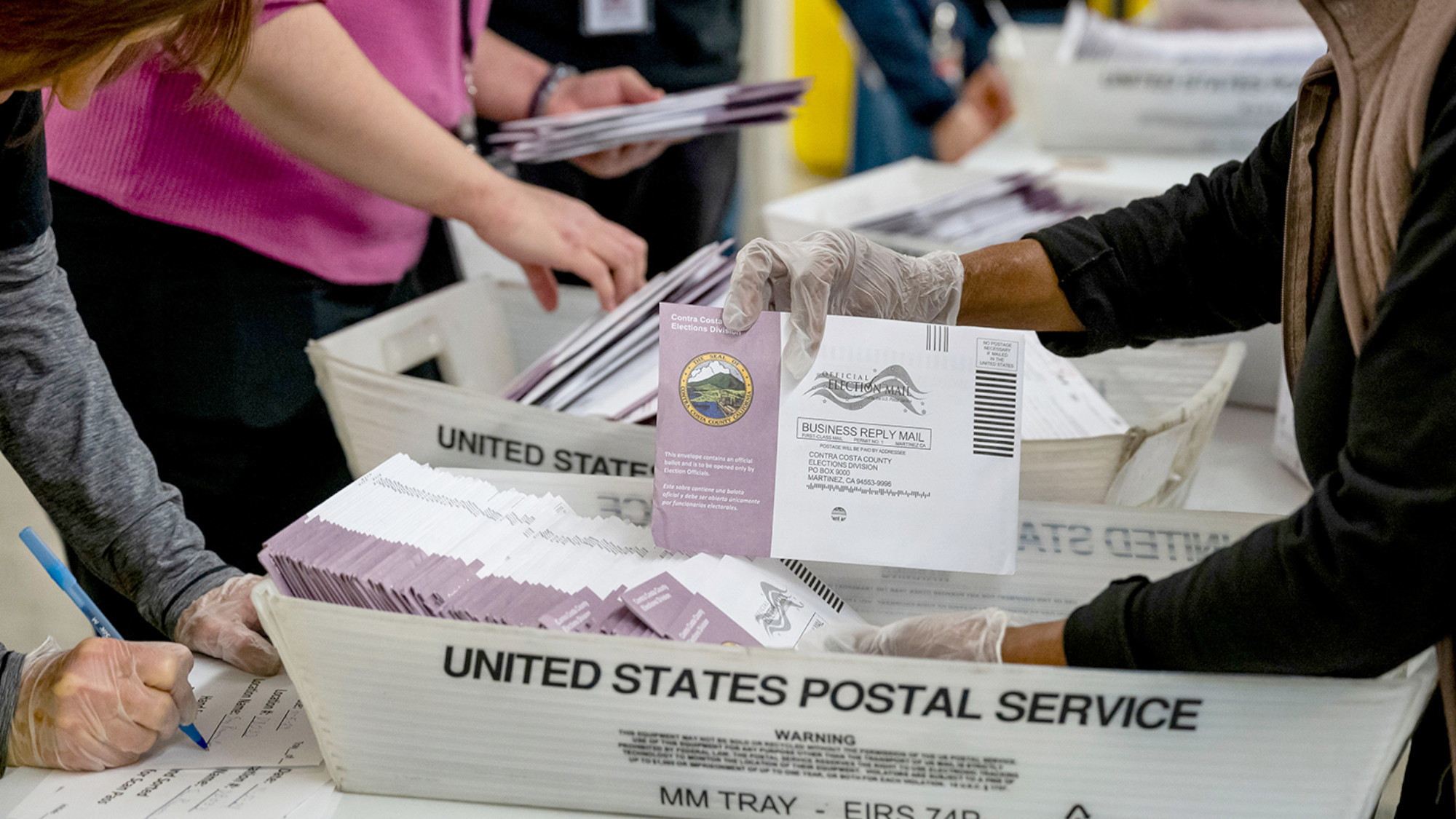Why fears of an Electoral College nightmare in 2020 are overblown
The numbers just don't support the idea that Trump will lose the popular vote more decisively while still winning re-election


Nate Cohn sent a panic wave crashing through Democratic Party circles Friday. The New York Times elections analyst — who is also responsible for the newspaper's terror-inducing elections forecasting tool "The Needle" — wrote a piece arguing that President Trump could suffer an even more decisive popular vote loss next year than he did in 2016, while still holding the Electoral College. But this panic was premature: While Cohn's scenario is worth psychologically preparing for, it is much less likely than he would have us believe.
Let's first understand Cohn's argument. He uses data from the 2018 midterms to estimate the president's approval rating in each state. Like most observers, Cohn expects Wisconsin to be the pivotal state in the 2020 presidential election and presents numbers from Marquette University polling that suggest Trump has held steady in the critical Milwaukee area, while seeing a decline in the rest of the state. "One reason that such a small swing in Wisconsin could be so important," Cohn writes, "is that the Democrats do not have an obviously promising alternative if Wisconsin drifts to the right." (If you don't understand how this is good for the president, you're not alone. More on that below.)
As Cohn notes, Florida was that alternative in 2016. He concludes based on New York Times/Sienna surveys of two Miami-Dade House districts that the president's numbers have improved there and that Florida has moved more toward Republicans during the Trump era. And it's not hard to imagine the Sunshine State staying in Trump's column, as Republicans have won every important statewide race there since 2014 and inflicted two narrow and dispiriting losses on Democrats in 2018.
The Week
Escape your echo chamber. Get the facts behind the news, plus analysis from multiple perspectives.

Sign up for The Week's Free Newsletters
From our morning news briefing to a weekly Good News Newsletter, get the best of The Week delivered directly to your inbox.
From our morning news briefing to a weekly Good News Newsletter, get the best of The Week delivered directly to your inbox.
Finally, Cohn worries that unusually high turnout could boost the Democratic nominee's numbers in blue states like California, close the gap (but not enough to win) in red states like Texas, and come up short in Wisconsin or Pennsylvania (or both). That scenario might indeed lead to another win for Trump. Increased margins in California, Illinois, and New York paired with narrower Democratic losses in Texas, Georgia, and South Carolina could add millions of votes to the Democratic popular vote count without changing the picture in the Electoral College.
Cohn doesn't say it, but for this to happen in consecutive elections with an even wider gap between the expressed will of the electorate and the outcome — all the while returning to office the worst, most divisive president in the country's history — would be an absolute fiasco for the legitimacy of American constitutional democracy. Many Democrats might conclude, not unreasonably, that America's electoral system is rigged against them and cease participation in the voting process altogether.
But there are three distinct problems with Cohn's warning, and therefore three important reasons to doubt its seriousness.
The first is simple: The chart he gives to readers suggests that Trump is less popular today in Wisconsin than he was on election night in 2016. He is less popular, though narrowly, in the Milwaukee area, and dramatically less so in the rest of the state. Given that the president won Wisconsin in 2016 by just 0.77 percent, it is hard to look at these numbers and conclude that the Democratic position there has deteriorated. If anything, it should be the Trump team wondering how they are going to pull out another miracle there.
A free daily email with the biggest news stories of the day – and the best features from TheWeek.com
The second problem is the assumption that a president running for re-election would see numbers drift in different directions in different states in a way that would produce a result as confounding as Cohn imagines. This hasn't been the case in recent years. In 2012, Barack Obama performed worse than he did in 2008 in 48 out of 51 states, including D.C. He improved by just over a point in the Democratic stronghold of New Jersey and the Republican base state of Mississippi, while beating his 2008 Alaska numbers by more than 8, perhaps a function of Sarah Palin not being on the ballot. With a few exceptions, his margins deteriorated across the board.
The case of 2004 might be more interesting for our purposes. That year, George W. Bush captured both the Electoral College and the popular vote by winning Florida — the state that provided his Electoral College margin in 2000 despite a loss in the national vote — and improving his popular vote numbers in 34 out of 51 states, including California, Texas, Florida, and New York. He did better in some states that were in the process of getting bluer (like California and New York) and worse in some states that were getting redder (including both South and North Dakota). There was no particularly clear partisan or geographic pattern to discern. The bottom line was that Bush did better in 2004 than in 2000 because he was more popular than when he was "elected" four years earlier.
That's not at all what we're seeing in Trump's case. While Trump may have hit something close to the two-party rock bottom in many blue states, the big picture is that the majority of states look like they will be worse for Trump than better — the opposite of the 2004 Bush re-election story. Morning Consult has been surveying 5,000 registered voters a day to produce a comprehensive, monthly-updated snapshot of Trump's approval rating in all 50 states, and those numbers do not remotely suggest that Trump is improving in the Rust Belt but declining in vote-rich blue states. Trump's approval number today in California (33) is higher than the percentage of the vote that he won there in 2016 (31.6), and his favorability ratings today in New York, Illinois, and Texas are very similar to his 2016 election night numbers. Remember, Cohn's thesis hangs on the 2020 Democratic nominee beating Hillary Clinton's margins in those states (without winning Texas), and that's just not what the data shows.
The third and perhaps biggest problem with Cohn's argument lies in his decision to base his analysis on a strange amalgam of 2018 numbers rather than the data we have today. He draws most of his conclusions from the 2018 midterm elections — which, as he admits, took place nine months ago. The Morning Consult data shows Trump polling lower than what Cohn presents to his readers. While it's always wise not to take one organization's polling as gospel, February numbers from Gallup were actually worse for Trump in important battlegrounds like Florida, Wisconsin, Texas, and Pennsylvania.
None of this is to say that Trump is a goner next year; everyone in this business should have learned in 2016 that any Democratic or Republican nominee can win with the right confluence of circumstances. Even a small improvement in today's numbers would make Trump a favorite. But the likelihood that the president will win another Electoral College blowout while getting crushed more decisively by the American people is simply not a scenario we should be losing sleep over.
David Faris is a professor of political science at Roosevelt University and the author of "It's Time to Fight Dirty: How Democrats Can Build a Lasting Majority in American Politics." He's a frequent contributor to Newsweek and Slate, and his work has appeared in The Washington Post, The New Republic and The Nation, among others.
-
 Bari Weiss’ ‘60 Minutes’ scandal is about more than one report
Bari Weiss’ ‘60 Minutes’ scandal is about more than one reportIN THE SPOTLIGHT By blocking an approved segment on a controversial prison holding US deportees in El Salvador, the editor-in-chief of CBS News has become the main story
-
 Could Trump run for a third term?
Could Trump run for a third term?The Explainer Constitutional amendment limits US presidents to two terms, but Trump diehards claim there is a loophole
-
 Has Zohran Mamdani shown the Democrats how to win again?
Has Zohran Mamdani shown the Democrats how to win again?Today’s Big Question New York City mayoral election touted as victory for left-wing populists but moderate centrist wins elsewhere present more complex path for Democratic Party
-
 Dutch center-left rises in election as far-right falls
Dutch center-left rises in election as far-right fallsSpeed Read The country’s other parties have ruled against forming a coalition
-
 Millions turn out for anti-Trump ‘No Kings’ rallies
Millions turn out for anti-Trump ‘No Kings’ ralliesSpeed Read An estimated 7 million people participated, 2 million more than at the first ‘No Kings’ protest in June
-
 Has the Gaza deal saved Netanyahu?
Has the Gaza deal saved Netanyahu?Today's Big Question With elections looming, Israel’s longest serving PM will ‘try to carry out political alchemy, converting the deal into political gold’
-
 Brazil’s Bolsonaro sentenced to 27 years for coup attempt
Brazil’s Bolsonaro sentenced to 27 years for coup attemptSpeed Read Bolsonaro was convicted of attempting to stay in power following his 2022 election loss
-
 Voting: Trump's ominous war on mail ballots
Voting: Trump's ominous war on mail ballotsFeature Donald Trump wants to sign an executive order banning mail-in ballots for the 2026 midterms



